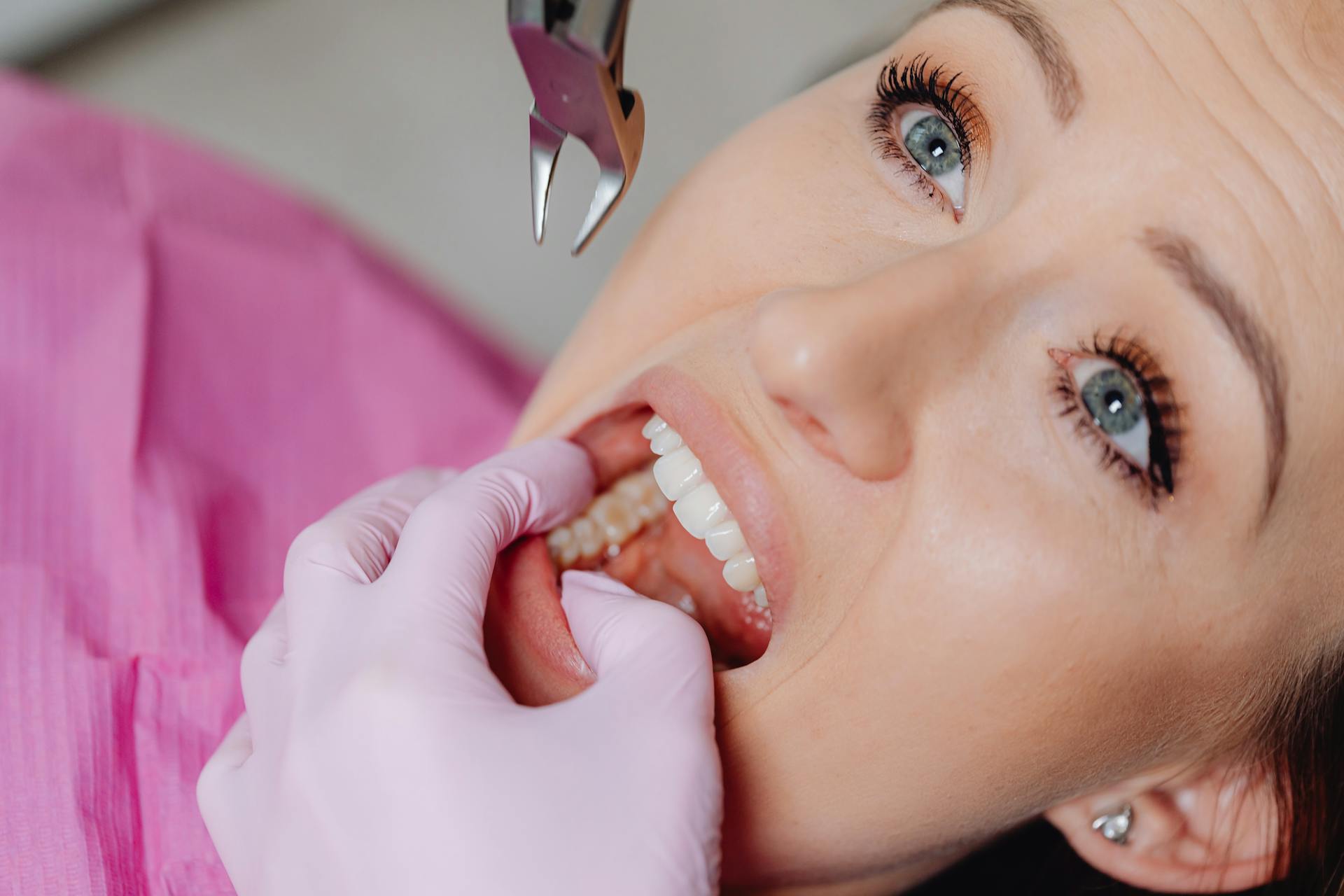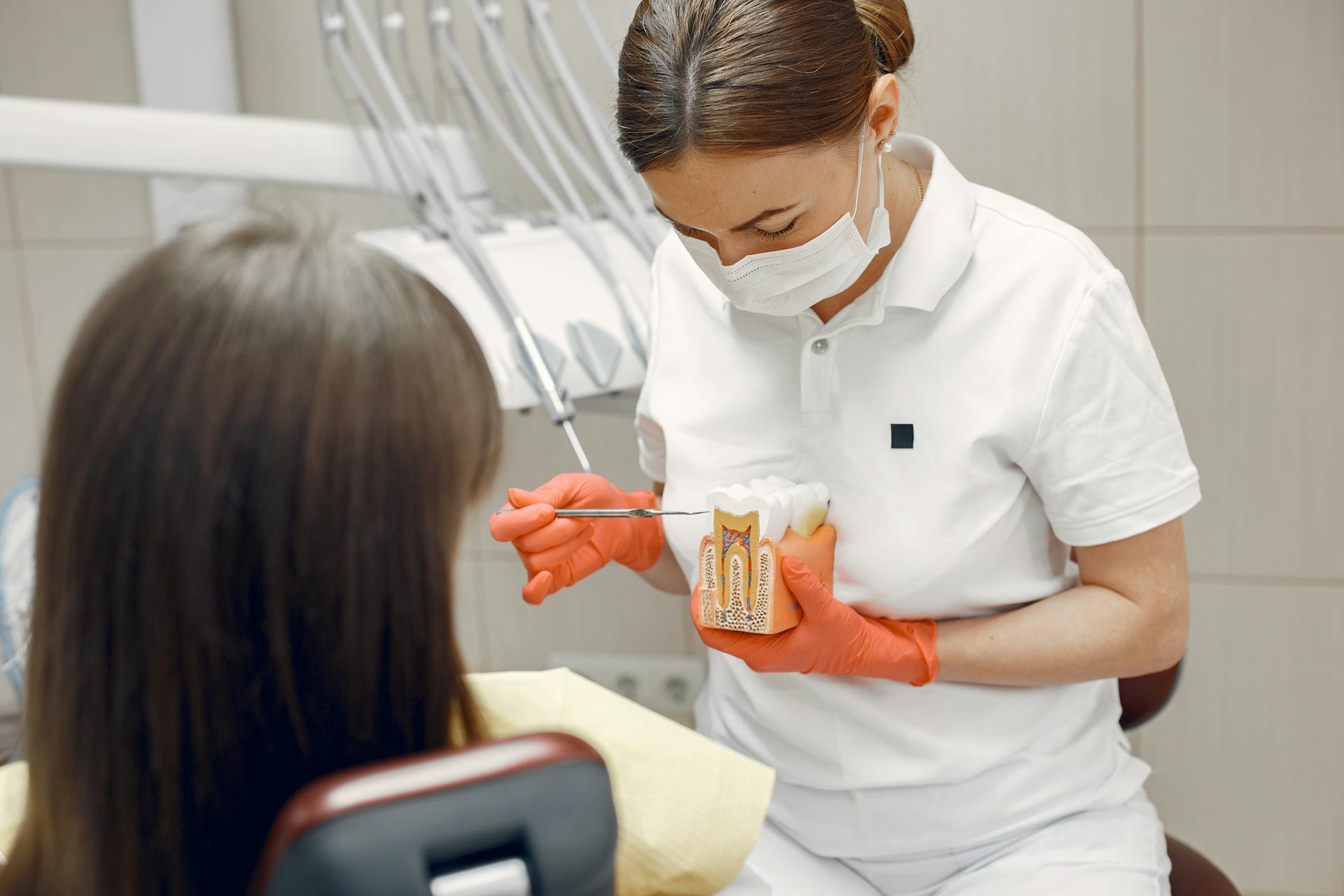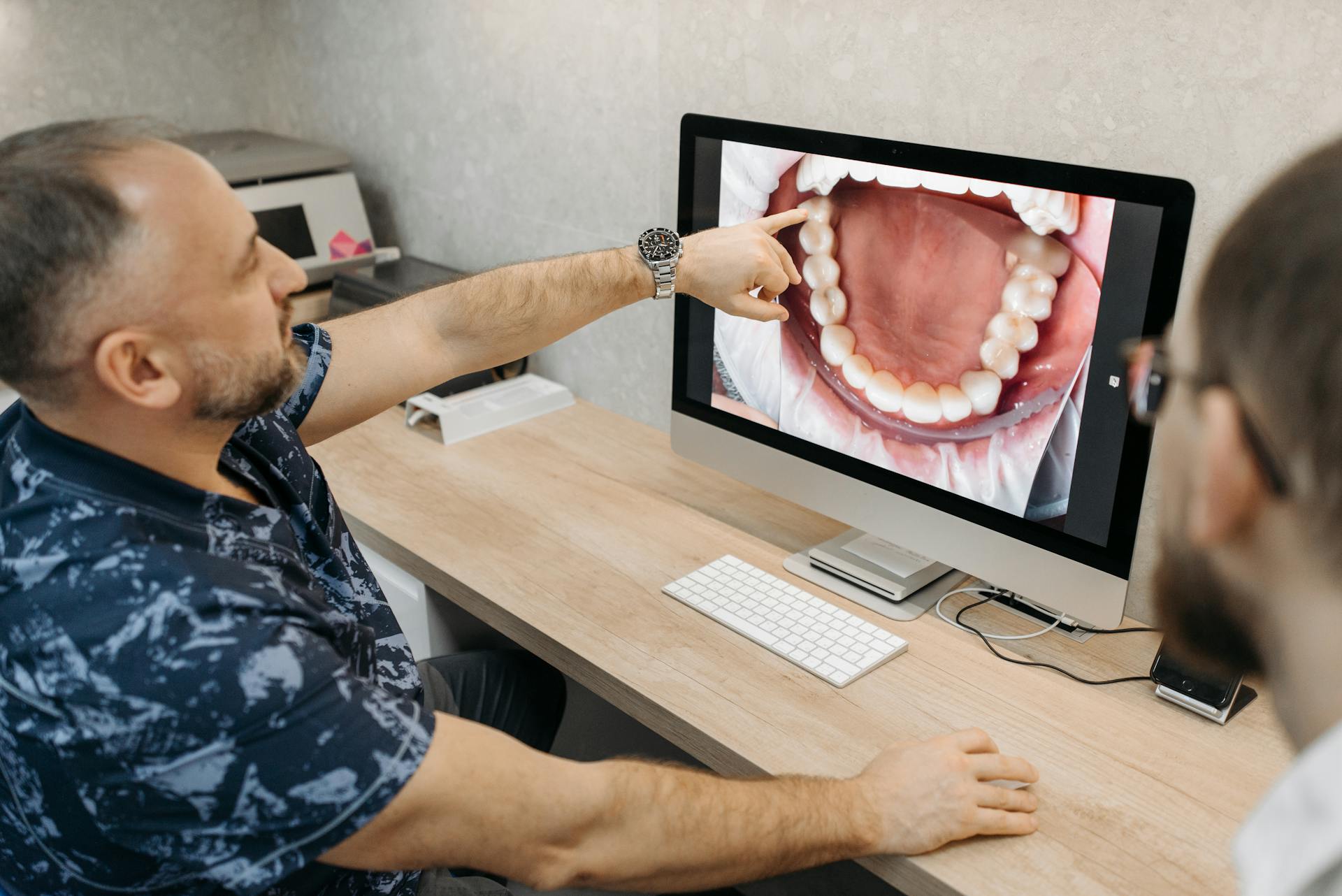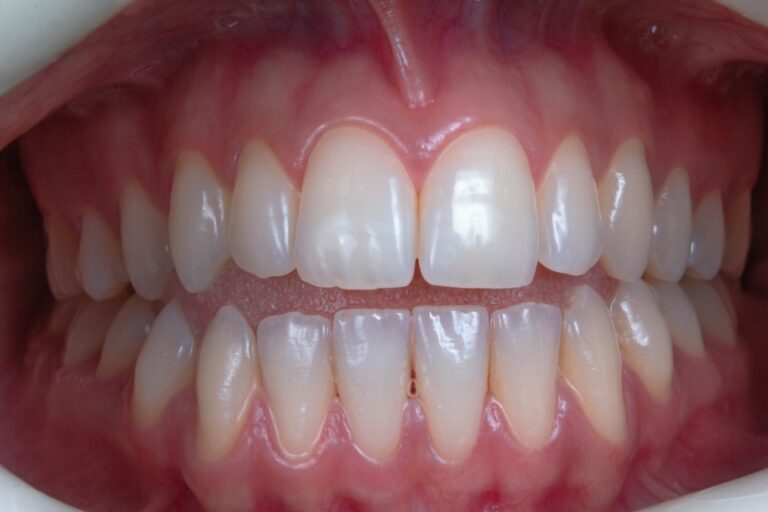
Are you contemplating a smile makeover to achieve that ideal grin? While these transformations can certainly enhance your appearance and boost your confidence, it is important to understand the potential risks involved.
From infections and allergic reactions to less-than-satisfactory results, this article aims to guide you through the various challenges you might encounter during the process. You will learn how to minimise these risks and what warning signs you should be watchful for during your smile journey. Continue reading to discover everything you need to know to make informed decisions about your dental transformation.
What Are Smile Makeovers?
Smile makeovers are tailored cosmetic dentistry treatments aimed at improving the appearance of your smile. They address a range of aesthetic concerns and functional enhancements through a combination of dental procedures.
This process can involve treatments such as dental veneers, crowns, braces, and dental implants, all designed to help you achieve a beautiful and confident smile that truly reflects your personality.
It’s important to be aware of the various options available, recognise the necessity for comprehensive treatment planning, and understand how these treatments can affect your overall oral health and facial aesthetics.
What Are the Risks of Smile Makeovers?

Smile makeovers can greatly improve your appearance and boost your confidence, but it is important to recognise the potential risks that come with these cosmetic dental procedures.
Being aware of these risks allows you to make informed decisions about your treatment options and manage your expectations effectively. Complications such as tooth decay, gum disease, and enamel damage may occur if proper care and professional guidance are not adhered to.
This highlights the necessity of conducting thorough risk assessments and maintaining clear communication with your dentist throughout the entire process.
1. Infection or Complications from Dental Procedures
Infection presents a potential risk with any dental procedure, including smile makeovers. It can lead to complications that may extend the healing process or result in additional oral health issues. This risk becomes more significant during procedures that involve anaesthesia, where the patient’s safety relies heavily on the dentist’s qualifications and their adherence to established protocols. Understanding these risks is essential for ensuring a successful treatment and recovery.
It is important to recognise the early signs of infection, such as persistent swelling, redness, increased pain at the treatment site, or discharge. Patients should be vigilant in monitoring their symptoms following the procedure.
Adhering to pre-and post-treatment care instructions is crucial, as it greatly reduces the likelihood of complications. This includes maintaining proper oral hygiene, following prescribed medication regimens, and attending follow-up appointments.
The combination of professional guidance from the dental team and the patient’s diligence is vital in minimising these risks and promoting optimal healing.
2. Allergic Reactions to Materials Used
Allergic reactions to materials used in dental procedures, such as anaesthesia, veneers, or crowns, can present significant risks during a smile makeover. Therefore, it is essential for patients to thoroughly communicate their health history with their dentist.
By understanding the types of materials used and their potential reactions, patient safety can be significantly enhanced, ensuring informed consent throughout the process.
For example, many dental applications incorporate metals like nickel in crowns or resins in composite veneers, which may cause sensitivities for some individuals. It is vital for patients to openly discuss any known allergies or previous negative experiences with dental materials during their consultation.
This transparency enables the dentist to explore alternative solutions that minimise risk.
Being proactive in this manner not only fosters a secure therapeutic environment but also strengthens the partnership between the patient and practitioner. Ultimately, this collaborative approach leads to successful aesthetic outcomes without compromising safety.
3. Nerve Damage or Sensitivity
Nerve damage or increased tooth sensitivity can occur as a complication of smile makeovers, particularly with more invasive dental procedures such as dental implants or orthodontics. It is essential to understand these risks in order to set realistic expectations regarding recovery time and post-treatment care.
This awareness allows patients to prepare for any necessary adjustments to their oral hygiene practices.
These complications can stem from various factors, including the proximity of nerves to the treatment site or the body’s reaction to dental materials. Patients should keep in mind that while some degree of sensitivity may be temporary, persistent issues might require attention from a dental professional.
To reduce these risks, proper post-treatment care is crucial. This includes following prescribed oral hygiene routines and attending scheduled follow-up appointments.
Ongoing education for patients about recognising the signs of nerve involvement can enable them to seek help promptly, ensuring that any potential complications are managed effectively.
4. Uneven or Unsatisfactory Results
One of the most prevalent risks associated with smile makeovers is the chance of achieving uneven or unsatisfactory results, which may lead to feelings of dissatisfaction and disappointment. It is essential to manage patient expectations through clear communication with the dentist to ensure that the desired aesthetic outcomes are both achievable and realistic.
Several factors influence the success of cosmetic treatments, including the individual’s unique dental structure, the materials used, and the skill level of the practitioner. Without a comprehensive understanding of these factors, patients might be taken aback by unforeseen results that do not align with their expectations.
Engaging in discussions about limitations and alternatives during consultations can offer a clearer perspective on what is realistically achievable. Ultimately, establishing a collaborative relationship between the dentist and the patient lays the groundwork for more satisfying outcomes and greatly enhances the overall experience of aesthetic enhancements.
5. Financial Costs
Financial costs can be a significant consideration when contemplating a smile makeover, as the various dental procedures involved can quickly accumulate. It is essential to have a clear understanding of all potential expenses.
Engaging in discussions about financing options and insurance coverage with your dentist during the consultation process can assist in effectively managing your personal budget and planning for treatment.
Each component of a smile makeover—ranging from teeth whitening and veneers to orthodontics and implants—has its own associated cost, which may vary depending on the complexity of the required work and the expertise of the practitioner. Additionally, insurance policies often differ in their coverage of cosmetic procedures, making it imperative to carefully review the details.
Exploring available payment plans or financing options can ease the burden of upfront smile makeover costs, enabling individuals to distribute their financial commitments over a more manageable timeframe.
By prioritising a thorough understanding of these elements, prospective patients can pursue their dream smiles without jeopardising their financial well-being.
How to Minimise the Risks of Smile Makeovers?

Minimising the risks associated with smile makeovers involves taking proactive steps, such as selecting a reputable and experienced dentist who places a strong emphasis on patient safety and effective communication during dental consultations.
By remaining informed and actively participating in the treatment process, patients can greatly reduce the chances of complications and improve their overall experience and satisfaction.
1. Choose a Reputable and Experienced Dentist
Selecting a reputable and experienced dentist is vital for minimising the risks associated with smile makeovers. The qualifications and expertise of the dentist can significantly impact both treatment outcomes and overall patient safety. By choosing a professional who employs the latest dental technology and practices, patients are likely to feel more confident in their cosmetic enhancements.
When considering a smile transformation, it is important to take into account factors such as the dentist’s educational background and specialised training in cosmetic dentistry. Evaluating their years of experience not only reflects their skill set but also provides insight into their proficiency with various smile makeover techniques.
Additionally, patient reviews and testimonials can offer valuable perspectives, highlighting the comfort and satisfaction experienced by others.
Professional advice is crucial in the decision-making process, as it helps guide individuals towards the best treatment options tailored to their unique needs. Furthermore, advanced technology contributes to an enhanced patient experience and more predictable outcomes.
2. Discuss Any Concerns or Pre-existing Conditions with Your Dentist
Open communication with your dentist regarding any concerns or pre-existing conditions is crucial for effective treatment planning and minimising risks during smile makeovers.
Engaging in this dialogue allows your dentist to tailor their approach to your specific needs while taking into account any factors that might impact your oral health or treatment results.
Discussing all health-related issues helps build a trusting relationship and promotes patient education, which enables you to fully understand the recommended procedures.
Through informed consent, you are enableed to make confident decisions, knowing both the benefits and potential risks associated with various treatments. This proactive approach not only enhances your overall experience but also encourages you to take an active role in your dental care.
By prioritising these important discussions, you establish a solid foundation for successful outcomes, ultimately paving the way for a healthier, more radiant smile.
3. Follow Post-Procedure Care Instructions
Following post-procedure care instructions is essential for ensuring a smooth recovery after a smile makeover. Neglecting these guidelines can lead to complications and negatively impact your treatment outcomes.
Maintaining proper oral hygiene and attending follow-up appointments are crucial for monitoring the healing process and ensuring that your new smile remains healthy and beautiful.
Adhering to these instructions not only promotes quicker healing but also helps prevent any discomfort that might arise due to improper care. During this time, effective oral hygiene routines, such as diligent brushing and flossing, become even more important. These practices minimise the risk of infection and other dental issues that could jeopardise the results of a carefully planned makeover.
Follow-up appointments act as important checkpoints, allowing dental professionals to assess progress, address any concerns, and make necessary adjustments to treatment plans. By prioritising these aspects, individuals can significantly enhance the longevity of their smile transformation and ensure a lasting, radiant smile that boosts their confidence.
4. Consider Alternative Options
Considering alternative options to traditional smile makeovers can be advantageous for patients who may have concerns about the potential risks of treatment or who hold unrealistic expectations regarding cosmetic enhancements. Exploring different approaches, such as less invasive treatments, can offer viable solutions that better align with the unique needs and preferences of each patient.
These alternatives may include procedures like:
- Teeth whitening
- Dental bonding
- Orthodontic adjustments
Each presenting its own set of distinct advantages and some limitations that should be thoughtfully considered. Patients often find that these less invasive options not only preserve more of their natural tooth structure but also involve shorter recovery times.
It is essential for individuals seeking enhancements to engage in comprehensive discussions with their dental professionals to fully understand the implications of each available option. By fostering open communication about their desires and concerns, patients can establish realistic expectations and achieve satisfactory results, all while prioritising informed consent throughout the decision-making process.
What to Watch Out For During and After a Smile Makeover?

Understanding what to monitor during and after a smile makeover is crucial for achieving a smooth recovery and satisfactory results. Patients should remain attentive to any unusual symptoms, such as pain, discomfort, or signs of complications.
It is important to communicate these concerns with their dentist during follow-up appointments to ensure that any potential issues are addressed promptly.
1. Pain or Discomfort
Experiencing some discomfort after a smile makeover is quite common, but it is essential for patients to differentiate between expected sensations and those that may warrant concern. Understanding what constitutes normal post-treatment care can significantly improve the recovery process and help patients manage their comfort levels more effectively.
Typically, mild soreness and sensitivity can be anticipated as the body heals from the adjustments made during the procedure. Patients should expect temporary tenderness around the gums or teeth, which is usually manageable with over-the-counter pain relief and by adhering to any specific guidelines provided by their dental professional.
However, if pain intensifies, persists beyond a few days, or is accompanied by swelling, fever, or unusual discharge, it is crucial for individuals to contact their dentist. These symptoms may indicate complications that require attention. Educating patients about these signs is vital to ensuring a smooth recovery and addressing any potential issues promptly.
2. Excessive Bleeding or Swelling
Excessive bleeding or swelling following a smile makeover can be quite concerning and may indicate complications that require prompt attention. It is essential for patients to be aware of the typical levels of swelling and bleeding during the recovery period and to recognise when it is necessary to seek assistance from their dentist to ensure their safety.
While some swelling and minor bleeding are common after the procedure, it is important to understand that significant or prolonged occurrences may indicate a need for evaluation by a dental professional. Proper post-treatment care is critical, as it not only facilitates healing but also reduces the risk of serious complications.
If bleeding does not subside after applying pressure for 30 minutes, or if swelling persists beyond a reasonable timeframe, it is advisable to contact the dentist as soon as possible.
Maintaining open communication with the dental team and following care instructions diligently can greatly enhance recovery outcomes.
3. Changes in Bite or Speech
Changes in bite or speech after a smile makeover can occur, especially with procedures that involve orthodontics or dental implants. While some adjustments are normal, it is essential for patients to closely monitor these changes and communicate any concerns to their dentist, as this can significantly affect their treatment outcomes and overall comfort.
These changes may stem from various factors, such as tooth alignment, the contours of dental restorations, or even the positioning of the jaw after treatment. Patients should be aware that their mouths may need some time to adapt following significant modifications, making it important to manage expectations during this transition period.
Engaging in open dialogue with their dental professional can help patients gain a clearer understanding of the necessary adjustments and how to effectively address any discomfort they may experience.
By promptly voicing concerns about bite discrepancies or speech issues, patients can ensure that appropriate evaluations are performed, leading to timely solutions that enhance their overall dental experience.
4. Persistent Discolouration or Sensitivity
Persistent discolouration or tooth sensitivity following a smile makeover may suggest underlying issues that warrant attention. Patients should be educated about the normal signs of recovery while remaining vigilant in monitoring any ongoing changes that might require further evaluation during follow-up appointments.
These issues can stem from various factors, such as reactions to dental materials, improper bonding, or even pre-existing enamel conditions. Understanding the importance of these symptoms is crucial for maintaining optimal dental health. Patients should feel encouraged to share their experiences with dental professionals, as open communication fosters a better understanding of potential complications.
Regular follow-up appointments serve not only as a means to monitor any ongoing challenges but also play a vital role in patient education. These visits ensure that individuals are well-informed and enableed to take charge of their dental wellness.
5. Dissatisfaction with Results
Dissatisfaction with results can pose a significant challenge in smile makeovers, especially when patient expectations do not align with what is realistically achievable. Recognising the importance of having realistic timelines and fostering open communication with the dentist can help reduce misunderstandings and lead to a more satisfying experience.
Engaging in a comprehensive consultation prior to any procedure is crucial, as it lays the foundation for a successful outcome by facilitating an open discussion about desired results and any potential limitations.
It is important for individuals seeking cosmetic enhancements to understand that each smile is unique, and variations in healing and results may occur.
Post-treatment care is vital in achieving satisfaction; adhering to aftercare instructions can greatly influence the final appearance.
Maintaining regular communication with the dentist throughout the process allows for the prompt addressing of any concerns, enabling necessary adjustments and providing reassurance that ultimately contribute to a more positive and fulfilling transformation.
Frequently Asked Questions
What are the risks of smile makeovers?
Some potential risks of smile makeovers include tooth and gum sensitivity, gum irritation, and changes in bite alignment. It is important to discuss any concerns with your dentist before undergoing the procedure.
What should I watch out for during a smile makeover?
During a smile makeover, it is important to watch out for any changes in the fit of temporary or permanent restorations, as well as any discomfort or irritation in the gums. It is also important to follow all post-procedure instructions provided by your dentist.
Can a smile makeover cause damage to my teeth?
If performed by a qualified and experienced dentist, a smile makeover should not cause damage to your teeth. However, it is important to follow all aftercare instructions and maintain good oral hygiene to ensure the best results.
Are there any risks specific to certain types of smile makeovers?
Some types of smile makeovers, such as porcelain veneers or dental implants, may have their own specific risks. For example, porcelain veneers may increase tooth sensitivity, while dental implants carry a risk of infection or failure. Your dentist will discuss these risks with you before starting the procedure.
Can I experience any allergic reactions during a smile makeover?
In rare cases, some patients may experience an allergic reaction to materials used during a smile makeover, such as dental bonding materials or anesthesia. It is important to inform your dentist of any known allergies before undergoing a smile makeover.
What should I do if I experience a complication during or after a smile makeover?
If you experience any unexpected complications during or after a smile makeover, it is important to contact your dentist immediately. They will be able to assess the situation and provide appropriate treatment to address any issues.






